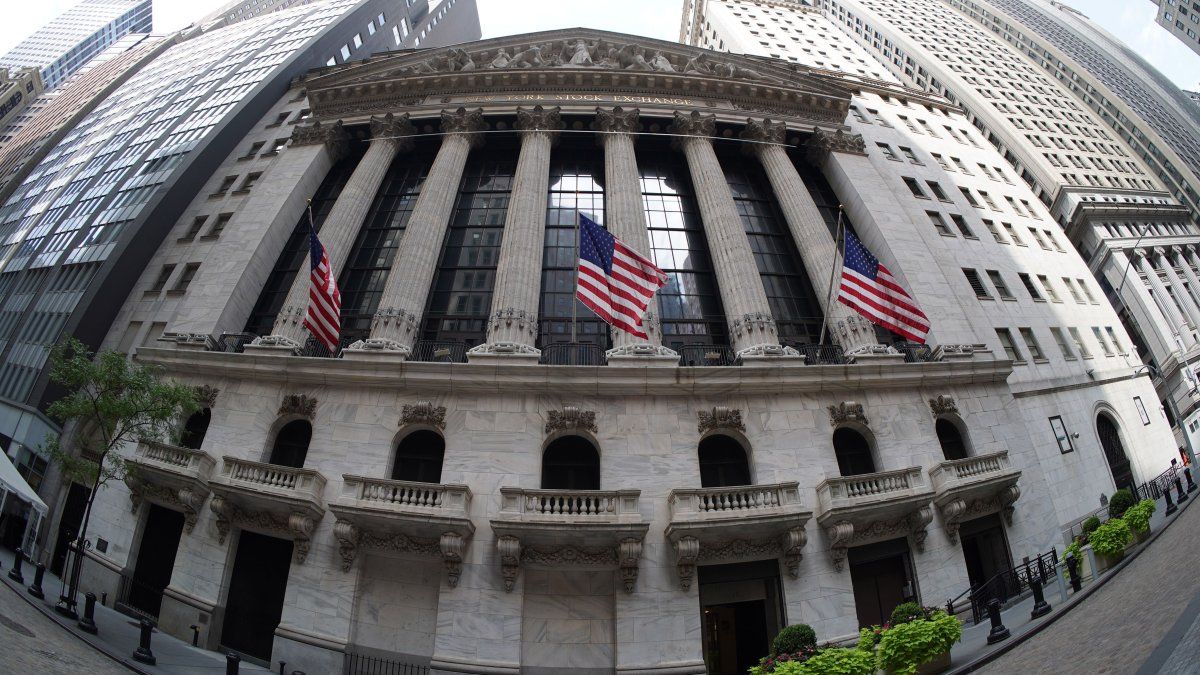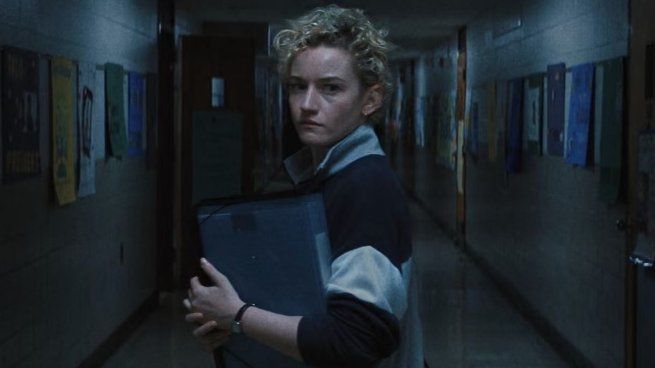Since October began, nothing has risen more than volatility. The bull market rules, but it climbs rockier and more pitted terrain. Specialists warn of the possibility of “another painful correction.”
A Black Monday was feared after the hand grenade that President Trump unexpectedly launched against China. The threat of applying an extra tariff of 100%, on Friday the 10th, detonated a very strong shock wave. On Wall Street, the S&P 500 (-2.7%) and the Nasdaq (-3.6%) suffered the biggest decline since April. Is the trade war escalating and it’s time to put on your helmet again? The blow was hard. But the most serious thing was receiving him off guard. And with the markets determined, by all means, including leverage, to reach new heights. For this reason, none landed worse than cryptocurrencies. After a gloomy Friday, will history repeat itself? The Ides of October allowed us to suspect another Black Monday. But Trump unsaddled quickly. On Friday he shot himself in the feet. He didn’t want to shoot himself for a second on Monday. Rather, quite the opposite. Diligent, he applied a tourniquet so that the markets did not bleed. “Don’t worry about China. Everything will be fine”he wrote on the same networks in which he had set off the gunpowder. The meeting with Xi Jinping at the end of the month is still on, although relations are faltering today. Wall Street responded with relief. Last Monday’s rise was the most powerful since May.
The content you want to access is exclusive to subscribers.
However, on Thursday they had to endure another shock. This time, it came from the trenches of credit and regional banking. Zions Bank revealed a $50 million loss tied to two commercial loans. AND Western Alliance Bank reported the initiation of a fraud lawsuit against a debtor, Cantor Group V. Two corporations filed for bankruptcy this month and rocked the waves. First Brands Group, an auto parts supplier, did so amid allegations of fraud. Tricolor Holdings -a firm dedicated to the sale of used cars and subprime collateral financing- filed for Chapter 11, two Sundays ago, suddenly. The collapse of First Brands touched an investment bank: Jefferieswhose stock, on Thursday, fell 11%.


The news frustrated the start of the balance sheet season. The big banks had launched it at full steam. Citi, Wells Fargo, American Express, among others, beat earnings estimates with ease. JP Morgan Chase, Goldman Sachs and Morgan Stanley took particular advantage of the trading bonanza on Wall Street (the most active quarter for initial stock offerings since 2021). The main administrator, Black Rock increased assets under management to a record $13.46 trillion, a 17% jump from a year ago. But there were no celebrations, but concern. Jamie Dimonthe CEO of JP Morgan, emphasized the still small credit mishaps. “When you see one cockroach, he said, there are probably more.” And the Stock Market stopped looking at the sky and the trail of billion-dollar profits. Instead, he immersed himself in searching with a magnifying glass for insects in the corners.
Ghosts over regional banking
Are the problems of regional banking returning, which knew how to cause a storm in March 2023 with the fall of Silicon Valley Bank (SVB) and other colleagues? Are the financing dramas returning as in 2007-2009? subprimeThis time, the one linked to consumption? What about commercial mortgages?the unresolved ghost left by the regional crisis of 2023? Defaults on office loans reach 10.4%, very close to 2008 levels. One trillion dollars of loans linked to the commercial real estate sector mature before the end of the year. Will your refinancing be complicated?
At Jefferies, the crisis committee mobilized quickly. The key is always to provide information that clears up doubts and sheds light on dark edges. On Friday, The analysts concluded that the First Brands affair was a specific case, with specific overtones of fraud; not the sign of an infection in the process of spreading. The paper rebounded 6%. Bank stocks generally rallied. And Wall Street recovered almost everything it lost on Thursday, also encouraged by Trump who insisted on downplaying the friction with Beijing.
Markets: what increases the most is volatility
Since October began, nothing has risen more than volatility. Not even the gold rush. On Wall Street, the VIX index catapulted 35% in the last 30 days, even discounting Friday’s decompression. The bull market rules, but it climbs rockier and more pitted terrain. And although a trip is not a fall, the feeling of vertigo it leaves is the same. The retail investor is the strongest supporter of the rise, the one who buys all the offers, and the only one who did not desert when institutions and professionals fled in terror in April. Well, this week, his trust acknowledged receipt of the inclemencies. Bullish sentiment – its optimism six months ahead – sank 12.2 percentage points to 33.7%, according to the AAII survey. And pessimism took the lead. It grew 10.4 percentage points to 46.1% (15 points above its historical average). 55% of those consulted consider that the shares are overvalued. Chocolate for the news, one might add.
The sudden change of opinion of the retail investor does not place him very far from the warning that Gita Gopinathformerly number two at the IMF, expressed last week in The Economist. The enthusiasm driven by artificial intelligence in the Stock Market establishes a parallel with the exuberance of the late 1990s – the fervor for dot-com companies – which culminated in the bursting of the bubble as soon as the new century began. It is difficult to gauge the reasonable pricing of technological innovation without incurring excesses (given its undeniable capacity to transform industries and increase productivity). “Investors have good reason to worry that the current rally is setting the stage for another painful correction.”said the Harvard economist. History can repeat itself, he concludes, “but the consequences could be much more serious and with greater global reach” than 25 years ago.
Wall Street holds on in the trenches
Investors are worried, it’s not just commentators anymore. Several indicators that measure objective market conditions – such as the share of rising stocks, the relative demand for bonds versus stocks or the rate differential between investment grade and speculative bonds – denote extreme fear. Volatility shakes the shaker even more. The salient novelty is that balloons that were previously unbreakable are now easily punctured, especially in the area of alternative cryptocurrencies. The crashes warn, and they multiply. And yet, there is a fear that is even stronger. Wall Street lateralizes under pressure. His march is a saw that drags on, and the bullets are already entering him, but he does not give up. The S&P 500 falters without moving far from records. On Friday it closed just 1.3% lower. Your choice is clear. The strongest fear is of being left out of the rally, and then having to run from behind. He knows that the Fed will give him a hand at the end of the month, with another quarter-point rate cut to which Powell himself already gave a favorable nod. As he gave them to the banks, on Wednesday and Thursday, opening the tap of the repo facility to shore up their liquidity with US$15 billion. That he didn’t use it again on Friday was a good sign. With a friendly Fed at our side, very attentive to events, it is preferable to endure hardships in the trenches than to rehearse a comfortable retreat. And that also applies to the precious metals fever, as not only did the stock market inflate its values under the protection of the announced relaxation of monetary policy.
Source: Ambito
I am a 24-year-old writer and journalist who has been working in the news industry for the past two years. I write primarily about market news, so if you’re looking for insights into what’s going on in the stock market or economic indicators, you’ve come to the right place. I also dabble in writing articles on lifestyle trends and pop culture news.




